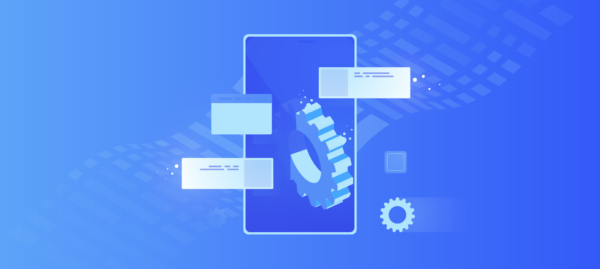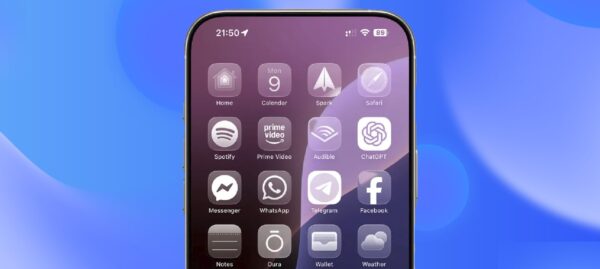Unstyled Components: A Must for Modern Web Applications
Jonathan Felipe de Oliveira | Dec 23, 2025

So you’ve got a brilliant idea for a new app or service, your colleagues and team are all onboard. Great. Now you’ve started thinking about how to build it and who could help build it. Even better. But hold up a second, what exactly is it you’re creating?
Will your app have an audience when it reaches the market? Does it align with, and benefit your business strategy? Is there a clear problem being solved? These are the questions you need to ask before you get started.
Fewer than 0.01% of apps succeed upon launch. A failed app doesn’t just hurt the ego. It amounts to countless hours of wasted work, budgets stretched to breaking point and a lack of confidence from current and future investors.
At Cheesecake Labs, we strive to build that 0.01%. We’ve designed a three-phase methodology for successful app development: product definition, product design and product development.
Our process ensures the final product not only meets the business, market and user needs, but that it’s the best possible use of your resources. It’s also achieved in total collaboration. We like to think of ourselves as the digital product experts, but you’re the spokesperson for your business. By working together, we’ll make a success of your mobile app idea.
In this article, we’ll tell you everything you need to know about Phase 1: Product Definition. We’ll look at why it’s essential to pause and explore the opportunities before you start building. We’ll also outline what’s involved in this early stage of app development and what you — as a client — can expect to get out of it.

The Product Definition phase can be summed up in one simple question: “what are you going to build?”.
Without a clear product definition, you’re guiding a ship through the fog without a lighthouse. You may — with luck — end up where you wanted to be. But chances are you’ll sink.
That’s why we champion the Product Definition stage with every client who comes to us in the early days of their mobile app development. Some other clients may be more evolved in their thinking — they already know how their app will benefit users’ lives and what form their app should take. Those clients need hands on deck to facilitate the build and that’s why they come to us. But there are a number of clients, in our experience, who aren’t nearly at that stage at all.
Other agencies may be chomping at the bit to sign a contract and get building, no matter whether the client is ready, but we’re not. Here’s why:
There’s no shortage of ways to waste money in the early stages of app development — especially if you push ahead without a plan. Building features for feature’s sake creates a lot of unnecessary overhead. Setting unrealistic go-live dates may drain your funds (and team) entirely. That’s not how we do things.
By incorporating the Product Definition phase into our early conversations, we are able to give realistic estimates and a well-defined roadmap before a Statement of Work for design and development is agreed. The Product Definition phase is also costed separately to the rest of the development process. If the app idea isn’t a go-er at this stage, nothing’s really lost. In fact, you’ve likely saved yourself a lot of time and money. Either way, you’ll have a fantastic body of insights to help hone your thinking and ideate again. Go or no-go, this phase mitigates risk.
Your app needs users. That’s why one of our core objectives in the Product Definition phase is to understand how and why a customer would engage with your idea.
Again, it’s better to know now whether you’ll have traction or not. By taking the time to explore whether users really need your app before costs start adding up, you’ll be able to progress with confidence — you’ll be building with the user in mind, right from the start.
Collaboration is key when building a digital product. You’ll want your internal teams aligned on what needs doing and when, and you’ll want any investors or additional stakeholders to support your idea as well.
The Product Definition phase helps facilitate that buy-in. Proof of concept acts as a crucial motivator for your teams, while the roadmap provides a structured approach for the weeks and months ahead. Any extra funding required should be easier to obtain too, as backers will know what they’re funding and why it’s worth it.
The short answer here is “no”.
Some clients come to us having already done this thinking. They understand the opportunity, have validated their space in the market and are ready to go. But these clients are more often in the minority. Most companies aren’t at that stage, even if they think they are.
That said, if you come to us with confidence and have enough evidence to move forward, we can skip straight to the next step: Stage #2: Product Design.
It’s important to remember that there’s no “one-size-fits-all” solution to defining your digital products. Cheesecake Labs isn’t here to take over your process, we’re here to collaborate and offer unique solutions tailored for every client’s needs.
From a top-level approach though, there are the four main steps for Product Definition. And at every step of the process, you’ll be working with senior members of the Cheesecake Labs team — a Product Manager, Project Manager, Tech Lead and a Lead Designer:
Your leadership team will have a lot of valuable intel to help steer the Product Definition process. That’s why we interview the key stakeholders, to better understand your business mission.
The best digital products reinforce your brand values and vision — taking the time to hear from your team will help us understand how that can be achieved.
Next, we’ll look at what the market needs and explore what your competitors are doing, or more importantly, aren’t doing in this space. If there’s a gap in the market, how can we — as a team — capitalize on it? That’s what we’ll capture in your benchmarking and competitors’ feature matrix.
Market analysis isn’t just about your competitors though. Your ideal customer is a deciding factor too. What issues are your customers facing — and how can you solve them? Are potential customers using other digital products to fill this need today? If so, how can you steal them away?
These crucial insights will feed into your product idea and help it thrive when it hits the market. We’ll help you explore the market opportunities you have and then decide on an app that speaks to that need — not the other way around.
Our years of experience make us pretty quick at spotting tech with usability issues. But we also need to make sure that your app is technically possible to build.
It’s in this validation process that we’ll begin to map out the frontend and backend of your app idea. How will it work? What integrations may be needed? We don’t want to get bogged down in the details just yet, but there’s also due diligence required before the idea takes shape.
The final step of Product Definition: putting (proverbial) pen to paper.
This is where we lay down the foundations for future development. Having collected all the necessary information, we can build a realistic roadmap for the development process. The roadmap will include time management and financial estimates, allowing you to gauge if the product will be viable with your budget, or if adjustments need to be made. We can work with a set-in-stone budget, designing within those constraints, or we can plan more iteratively — whichever works for you.
A customer journey map is produced to illustrate the target customer’s interactions with your app — conveying the need for your digital solution in their lives. The map will also identify potential problems that may hamper customer engagement to ensure the development stays customer-focused.
Lastly, we’ll also produce some exploratory wireframes and a user navigation flow, so everyone can get a feel for what the product will become. Think of this as an early prototype, showcasing key features, UI design ideas and how customers could interact with the product when it’s live (UX).
Below you can navigate the full prototype that we created for FindHeli on InVisionApp.
Remember that on the Product Definition phase we will not deliver that complete prototype, but:
The definition phase should take 4-6 weeks and will set you up for successful design, development and — ultimately — launch date too. We’ll keep the lines of communication open with you throughout; our job is only done when you’ve got everything you need.
Cheesecake Labs has been bringing unique digital products to life for almost a decade and every single product was created upon the same foundation of collaboration, integrity and care.
We are passionate about product definition and understand how vital the process is for apps and other digital products like. Let us bring clarity to your vision. Get in touch with the team today.

Douglas started as a Senior FullStack Developer at Cheesecake Labs and currently he's Partner and CBDO at the company.


